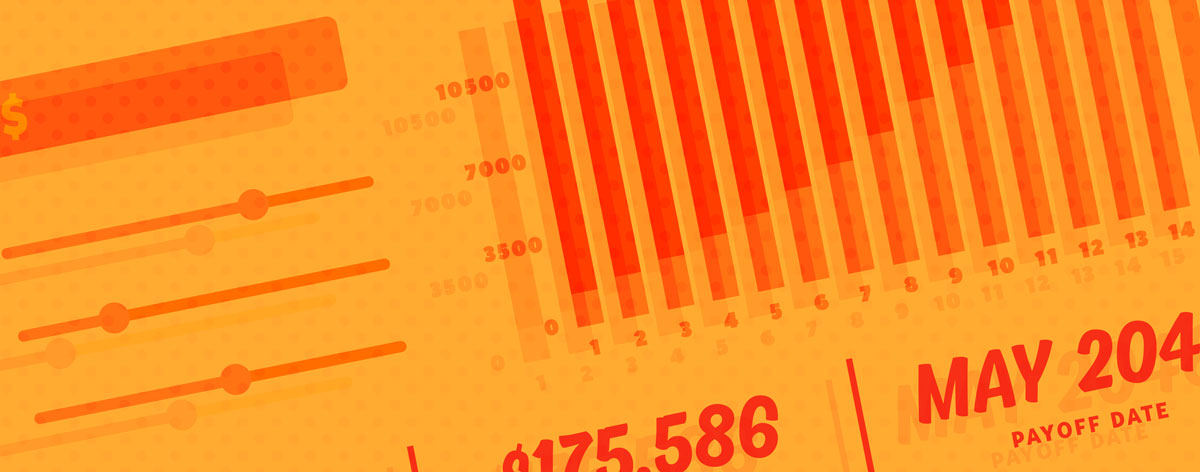50/30/20 Rule
In this article:
The 50/30/20 rule is a simple, practical rule of thumb for individuals who want a budget that's easy and effective. It offers guidelines for enjoying your income while putting savings on autopilot.
Humans are fallible—sometimes we just need guidelines. If you struggle making sense of a sea of budgeting systems and apps, consider the 50/30/20 rule. Developed by Elizabeth Warren, a senior U.S. Senator from Massachusetts and expert in bankruptcy law, the 50/30/20 rule states that your after-tax income should be roughly divided three ways:
- 50% to needs
- 30% to wants
- 20% to long-term savings

The 50/30/20 rule is not gospel and it's not a law. It's simply a guideline. Here's a tool to help you see how much of your monthly income should be used in each category according to the rule:
The beauty of the rule is its simplicity. We humans are imperfect, and one of our greatest weaknesses is our tendency to bail when things get complicated or stressful. Sophisticated budgeting systems are complicated and stressful. Budgeting is something you must do your entire life. Find a way to simplify it.
People define their needs in vastly different ways, but there are several things we can all agree on: housing, food, utilities, and transportation—to name a few. Another necessity that may not jump to mind as quickly is insurance. Be it life, auto, homeowners, health, or one of the many other insurance options, insurance is absolutely vital to protecting you, your loved ones, and your property
Housing: Rent, mortgage, homeowners insurance, property taxes
Transportation: Car payment, gas, bus or train passes, parking fees
Insurance: Auto, life, homeowners, health, renters
Utilities: Gas, water, electricity, internet, cell phone
Loan payments: Credit card debt, student loans
Short- to mid-term savings goals: Down payment on a car, a new roof, replacement furnace
Health care: Insurance premiums, deductibles, prescriptions
Note that the necessities come in two flavors: routine expenses and predictable goals. Some things you'll pay for regularly and others require you to think ahead and anticipate future needs.
While the necessities are easy to agree on, wants are subjective and personal. A vacation Jack considers valuable—essential, even—Jill finds frivolous and wasteful. The 50/30/20 rule encourages you to be explicit about your wants. But don't beat yourself up over them. Give yourself permission—within a reasonable set of constraints—to spend some of your money on things that make your life enjoyable.
Gym memberships
Clothing
Online subscriptions
Cable TV
Furniture
Vacations
Hobbies
Eating out
If you squint, you'll see similarities between your wants and needs. Clothing, for example, is a necessity, but spending extra cash for fancy clothes is definitely more frivolous and probably more like a want than a need. This doesn't mean you can't treat yourself with things that are fun or unnecessary, but be honest with yourself while creating your budget to balance your wants and your needs.
There is no financial habit as important as saving. Unsurprisingly, it's also the hardest. Saving a little each paycheck can make things much easier when unexpected expenses come up. Whether you follow the 50/30/20 rule or not, you should make a goal to save a significant portion of your income for rainy days and retirement.
The former is hard because, with our money, we're optimists. What could go wrong? Retirement, on the other hand, is difficult because it can seem so distant. (Surely I can save for retirement when I get a better job, right?)
Set aside a portion of your income each month in a savings account to create an emergency fund. A savings account will psychologically earmark your money, making it less likely you'll withdraw it for spontaneous reasons. While your rainy day fund may require a little sacrifice now, it can be life saving if you're laid off from work or met with a sudden medical emergency. If disaster strikes, you can easily transfer the funds to a checking account to get you through.
One of the great secrets to saving is finding ways to make it automatic. Don't put yourself in the position of deciding how much to save with each paycheck. Make the savings decision once, and ride it as long as possible.
Some employers, if they support direct deposit, will let you split your paycheck between accounts. This payment method is also a nice way to put money into a savings account automatically.
Finally, some people frown on saving money, calling it unnecessarily severe, or self-depriving. Resist that feeling. Saving is not about amassing a pile of money—it's about security and preparing. Saving is gratifying. It will instill confidence and self-respect. You can make saving less nebulous by giving your savings a purpose. Do you want to buy a home? A new car? Go on a dream vacation? Save for that purpose. This will give you a reason to save, rather than just doing it because you feel like you should.
Like all budgeting methods, the 50/30/20 rule is not perfect, and shouldn't be applied as defined to every budget. Saving 20% is a huge improvement for some people. For others it's low. If you're a high income earner, for example, you should consider saving (and investing) much more than 20%, especially if you intend to travel. On the other hand, if you barely make ends meet (which is fine, we all go through it!), consider spending less than 30% on wants. Resist the temptation to compare yourself to others. Make adjustments. Place an emphasis on your long-term goals.
Note: The 50/30/20 rule is not appropriate for individuals who are in deep personal debt (unsecured debt). To avoid bankruptcy, a default, or long-term credit damage, dedicate as much of your income to paying off credit card balances and student loans as possible. Without neglecting your emergency fund, you may need something like a 75/5/20 rule until you've cleared your obligations.
The 50/30/20 rule is a simple, practical rule of thumb for individuals who struggle to budget. It offers guidelines for enjoying your income while putting savings on autopilot. Some folks will disagree, calling it too lenient or too strict. That's fine. Skilled budgeters and savers will develop their own habits and can be as disciplined as they like. But, if budgeting isn't natural to you—especially if you're young, and you've avoided deep debt—the 50/30/20 rule gives you permission to relax a bit and put savings on autopilot.
Neither Banzai nor its sponsoring partners make any warranties or representations as to the accuracy, applicability, completeness, or suitability for any particular purpose of the information contained herein. Banzai and its sponsoring partners expressly disclaim any liability arising from the use or misuse of these materials and, by visiting this site, you agree to release Banzai and its sponsoring partners from any such liability. Do not rely upon the information provided in this content when making decisions regarding financial or legal matters without first consulting with a qualified, licensed professional.


